The Samsung Galaxy A52 5G, released in March of 2021, is part of the brand’s lower-priced A line of devices, but the A52 has some features you would normally expect on a more expensive model, such as a FHD+ 6.5-inch Super AMOLED display, an Exynos Octa-core processor, and a fast-charging 4500 mAh battery.
Key display specifications:
- OLED screen
- Size: 6.5 inches (~84.1% screen-to-body ratio)
- Dimensions: 159.9 x 75.1 x 8.4 mm (6.30 x 2.96 x 0.33 in)
- Resolution: 1080 x 2400 pixels
- Aspect ratio: 20:9 ratio, ~402 ppi density
- Refresh rate: Adaptive 120 Hz
About DXOMARK Display tests: For scoring and analysis in our smartphone and other display reviews, DXOMARK engineers perform a variety of objective and perceptual tests under controlled lab and real-life conditions. This article highlights the most important results of our testing. Note that we evaluate display attributes using only the device’s built-in display hardware and its still image (gallery) and video apps at their default settings. (For in-depth information about how we evaluate smartphone and other displays, check out our articles, “How DXOMARK tests display quality” and “A closer look at DXOMARK Display testing.”)
Test summary
Scoring
Sub-scores and attributes included in the calculations of the global score.
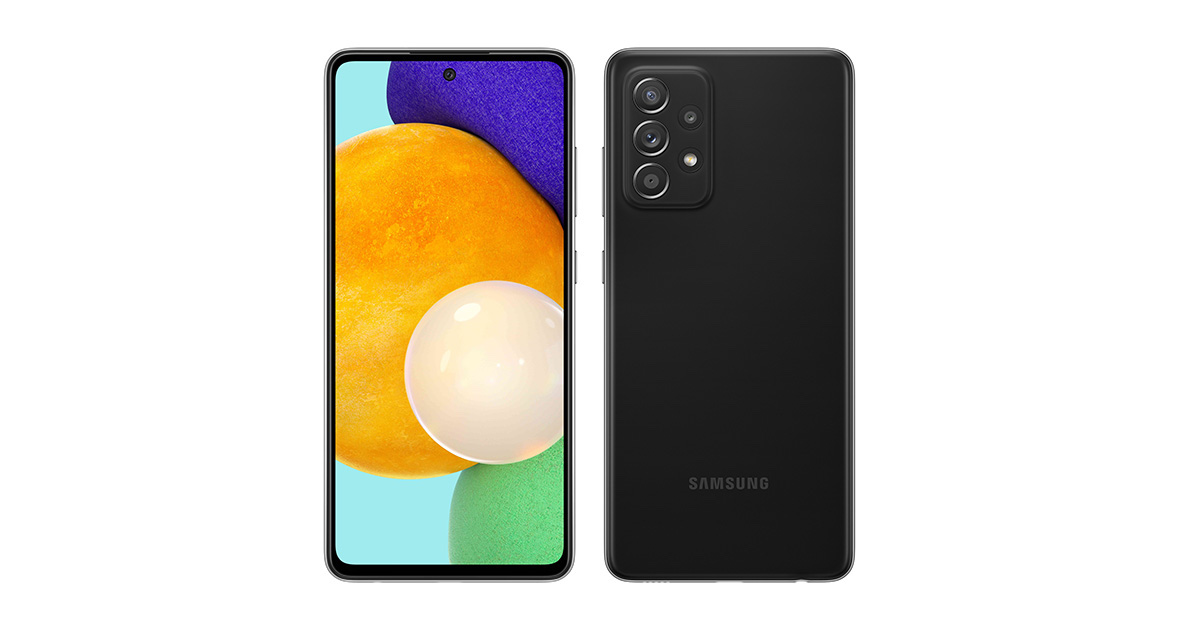 Samsung Galaxy A52 5G
Samsung Galaxy A52 5G


 161st
161st
 26th
26th
Pros
- Accurate colors, especially in outdoor conditions.
- Device maintains details without degrading content, especially under sunlight.
- Web browsing feels smooth.
- Brightness and colors are uniform across whole screen.
Cons
- The device lacks brightness in most tested conditions aside from low light, where it is a bit too bright.
- HDR10 video content lacks brightness and needs better color and contrast management.
- Frame drops are a problem when watching videos or playing games. The device also doesn’t read 60 fps UHD content.
- Ghost touches are frequent when using phone one-handed.
The Samsung Galaxy A52 5G’s overall score of 79 is decent for a device in this price range. While it has some notable drawbacks, it performs well across a wide range of use cases. Let’s take a look at how it did for each specific attribute.

Readability
Samsung Galaxy A52 5G
68
76
DXOMARK uses the device’s gallery app to show static (still image) content when measuring the device’s display for brightness, contrast, gamma, and blue light impact, etc.
Readability is the most important measure of a smartphone display’s basic functionality, and here the A52 5G earns average to good marks. The device adapts smoothly to rising light levels, but in falling light, the transition is too quick and shows multiple tiny steps. In outdoor conditions, the phone applies readability improvement abruptly in bright sunlight.
Its peak luminance measures up well against the TCL 20 Pro 5G and the Google Pixel 5, while not quite hitting the heights of the Samsung Galaxy S21 Ultra 5G (Exynos), as shown in the graph below:
The Samsung Galaxy A52 5G lacks some brightness in indoor conditions as well as outdoors. Our engineers noted that the A52 5G’s screen is quite reflective, which had an impact on its readability, especially outdoors. However, the device’s rendering is a bit more natural than its competitors under sunlight.


The A52 5G loses brightness and contrast when viewed at an angle (as all phones do to some extent), but it earned average marks here and is still readable.
With the blue light filter on, the A52 5G has a noticeable loss of brightness, but the device remains dazzling.
As for brightness uniformity, the A52 5G had one of the best results among the devices our engineers have tested, even though there are some slightly brighter areas in the bottom middle and at the top.
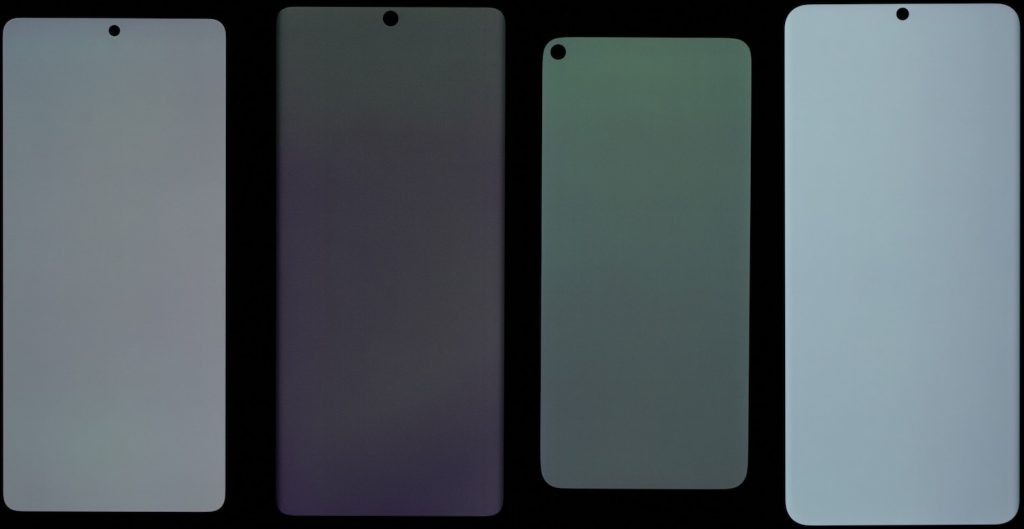

Color
Samsung Galaxy A52 5G
83
92
DXOMARK uses the device’s gallery app to show static (still image) content when measuring the device’s display for white point, gamut, uniformity, color fidelity, and blue light filter impact, etc.
With an 83, the A52 5G measures up quite well in the color attribute, even against much more expensive devices. Like many smartphones, the device does not adapt its color when the ambient illuminant changes. In indoor lighting, as in the illustration below, colors are generally oversaturated. However, skin tones show a good level of saturation.

Outdoors in the sunlight, a slight green cast is visible on the A52 5G, as in the photo illustration below. Outdoors in the shade, there’s a slight yellow/orange cast. Both in shade and direct sunlight, the rendering of skin tones is fairly natural.

As is typical of smartphone displays generally, the Samsung Galaxy A52 5G shifts color when viewed at an angle, but the A52’s shifts are quite atypical: as the device shifts, the color cast alternates quickly between blue and pink, as the scattering of dots below in the right-hand chart illustrates.
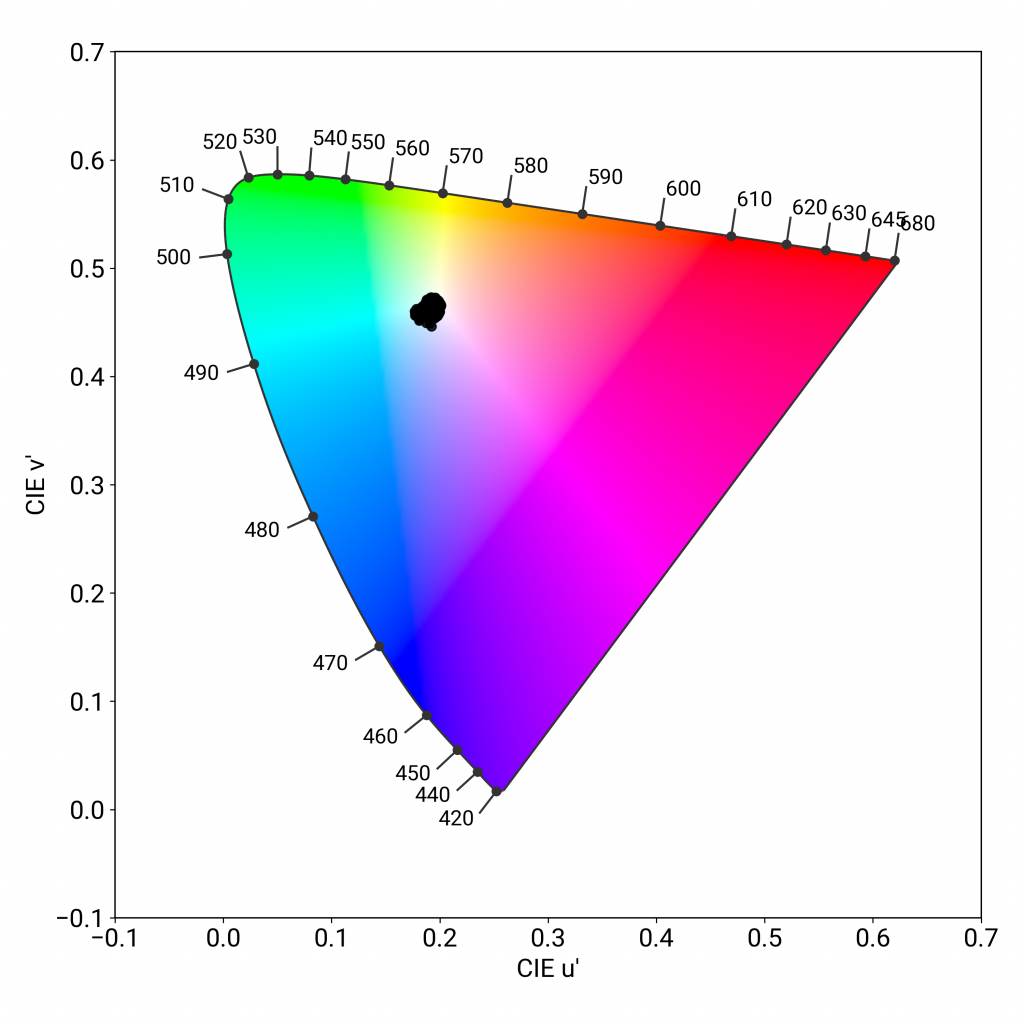

The blue light filter on the A52 5G adapts its efficiency according to the time of day, becoming more effective during the nighttime. As with brightness uniformity, the color uniformity is quite good, with some very slight reddish areas where it is darker.

Video
Samsung Galaxy A52 5G
63
91
DXOMARK uses the device’s video (or browser) app to show dynamic content when measuring the device’s display for brightness, contrast, gamma, and color.
The A52 5G lacks brightness when displaying HDR10 content, but it is still readable. Dark details are hardly visible, both in low-light and indoor conditions. Color tends toward a reddish hue, which also impacts skin tones. As for contrast, the midtones are a bit over-contrasted and again, dark areas don’t show enough detail.


Motion
Samsung Galaxy A52 5G
71
87

Touch
Samsung Galaxy A52 5G
57
85
The A52 5G was a mixed bag in the motion attribute. It shows some stutter at both 30 fps and 60 fps (below left shows the results at 60 fps), and it produces frequent stutters when playing video games, which has a negative impact on the experience. Motion blur is well managed. When moving the sliders to navigate within video content, the A52 is a little too slow to restart and frame jumps are sometimes visible.

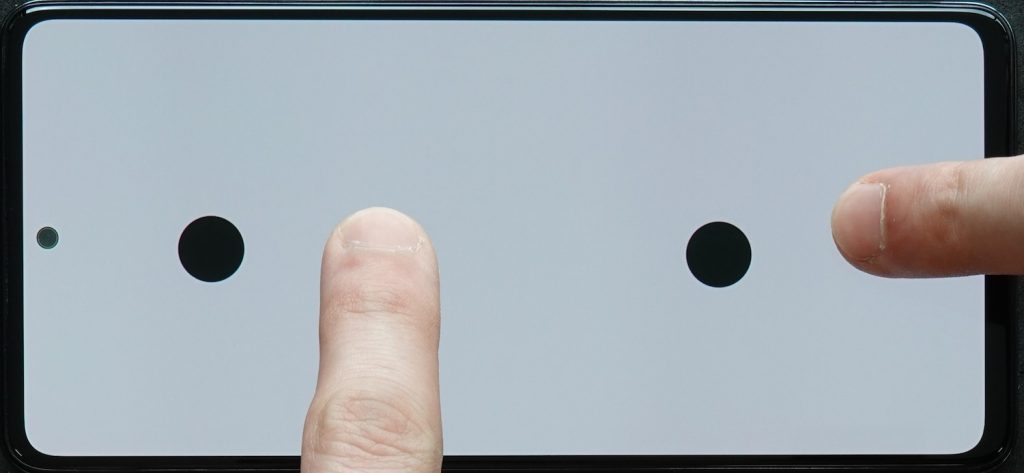
The A52’s score for touch was low due to several factors. The device is not accurate when using two fingers to zoom in on content in the gallery app, as you can see in the photo illustration above right. The A52 feels smooth when browsing the web; browsing in the gallery app feels a little abrupt, however. In gaming, the lack of smoothness is evident.

Artifacts
Samsung Galaxy A52 5G
70
86
The Samsung device could have had a much better artifacts score had it not gotten low marks for frequent ghost touches that made it very difficult to play games one-handed. The screen keeps acting on unintentional touches. It also got low marks for flicker, where like many other Samsung devices, its flicker was visible when reading at night:
The A52 5G did well in minimizing judder, and it also managed aliasing quite well:
Conclusion
The A52 5G could be brighter in most tested conditions, which is true in the video use case as well. The device does not read 60 fps UHD content, which is inconvenient for some, and its ghost touches are something gamers will notice right away. But despite a few quirks, the Samsung Galaxy A52 5G delivers good quality and performance for the price. Its colors are accurate, especially in outdoor conditions, and it retains good details without degrading content, especially in direct sunlight. Web browsing feels smooth.


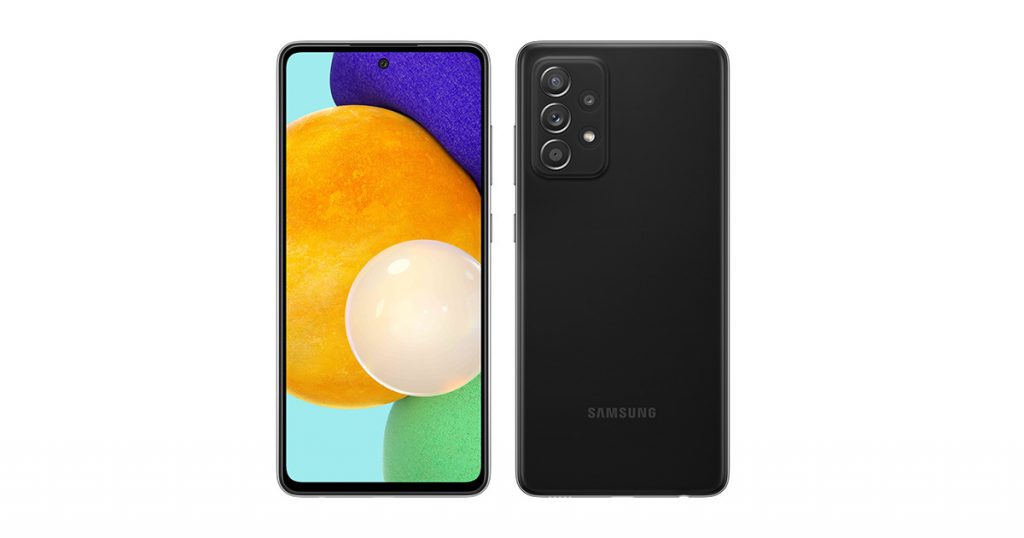
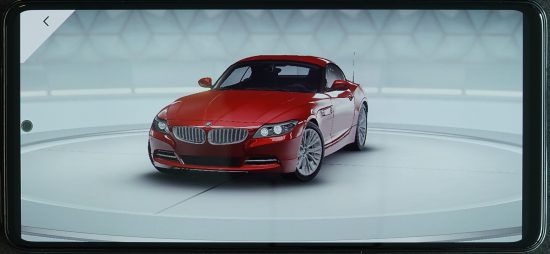
DXOMARK encourages its readers to share comments on the articles. To read or post comments, Disqus cookies are required. Change your Cookies Preferences and read more about our Comment Policy.